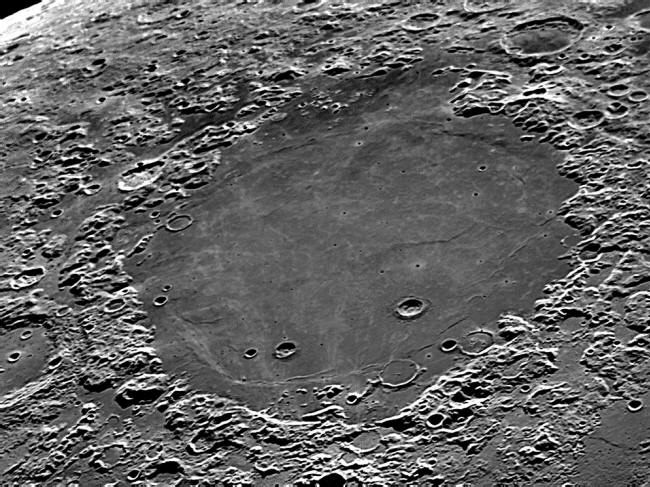|
is home to one of the largest mass concentrations (mascons) on the Moon. Credit: NASA.
Since it is considered "cold and dead" today, those formative events took place early in its history, billions of years ago. It is clear that cataclysmic devastation occurred at some time in the past:
The tacit implication is
that the Moon has not changed much, since what happened then is
visible today.
Lunar "graben", for example, are said to result from slow crustal movements similar to those that cause terrestrial earthquakes.
However, there is no evidence that the Moon was once subjected to tectonic activity:
According to a recent
press release, the cause of lunar disconformities is gigantic
meteors striking its surface billions of years ago.
Some of the features on the Moon are reminiscent of Mars. The south pole of Mars is covered with dust and debris about 430,000 square kilometers in extent.
There are thousands of craters at every scale:
The north pole of Mars might be considered a crater itself, since, as terrain mapping instruments in orbit reveal, the northern latitudes are six kilometers below the planet's mean elevation.
This correspondence to features on the Moon is striking...
It could be that both Mars and the Moon experienced similar forces at some period.
They might have come from a source that is rarely considered by planetary scientists:
At some time in the relatively recent past, a flow of electric charge appears to have impinged upon the Moon, removing material from one hemisphere (nearside) and depositing it on the other (farside).
Those electric discharges also formed the great rayed craters.
How recent those events must have been can be gauged by the superficial nature of the bright rays and their extent.
This explains why the bottoms of the lunar maria are smooth and flat, with little or no blast debris.
As has been written elsewhere, since the hemispheres and not the poles of the Moon are where the most intense electrical activity seems to have occurred, it is not beyond consideration that the Moon is no longer in its original orientation with respect to Earth.
What we call the near
and far sides of the Moon might once have been the two polar
regions.
|


